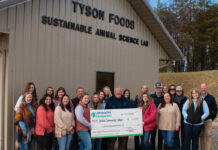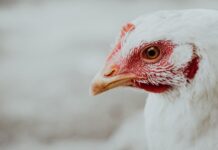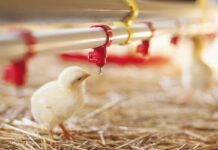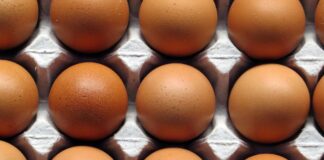
Egg producers are always looking for ways to improve layer hen’s efficiency as, nowadays, the genetic potential of layers is targeting an extended age of production of 100 weeks, making the industry more sustainable.
Australia is moving towards increased layers cage free production and there will be differences compared to the traditional production in cages in how to achieve this goal. Achieving the extended production in cage free production should be based in 5 principles of nutrition:
- the proper development of the body of the pullet and layers during the first 5-6 weeks of life using the proper starter feed;
- the feed intake capacity using a developer feed;
- the right energy and amino acid intake to avoid deficiencies and behavior issues;
- a calcium and phosphorus balanced nutrition based on needs;
- and the proper structure of the feed where the bird cannot select based on particle size.
Each of these principles will facilitate the path to achieving layer hens in cage free production at 100 weeks of age.
Introduction
Right now, there are two different models of production in the world and they are based on the income of the people. We have 7% of the population that lives on more than US $50 per day and the percentage of food expenses is a minimal part of their income. These rich countries are moving towards production where cages are banned and the birds need to be provided with space outside of the barn. However, 71% of the world population lives on less than US $10 per day and these countries are investing in closing the birds in, getting them into cages and making production automated to improve productivity.
It is a fact well documented in the literature that the birds in cage-free production need higher levels of nutrients to achieve the same production as caged birds. These needs will require a higher demand for raw materials, and therefore more natural resources like soil, water, transport energy and fertilizer. This increased requirement for resources contradicts the concept of sustainability itself. Sustainable development has been defined by FAO as “the management and conservation of the natural resource base, and the orientation of technological and institutional change in such a manner as to ensure the attainment and continued satisfaction of human needs for present and future generations defined as the maximization of the natural resources available in our planet earth”, FAO Council 1989. Somehow, this point has been forgotten or put aside when moving to cage free production by rich countries without thinking about the rest of the world.
Genetic companies are working towards maximising egg production. Since genetic selection commenced, the number of eggs per hen has increased due to improved laying rate of the bird as it gets older. As these birds can keep producing for a longer time, we also must adjust our nutrition to provide the nutrients to allow it to happen. In cage-free production, there are 5 points where we must focus our attention: the starter feed to achieve the body weight at 5-6 weeks of age; feed intake capacity at the start of lay with the developer feed; correct levels of energy and amino acids in the feed during production; Ca and P nutrition; and feed structure.
Starter Feed
 Until the 6th week of age, the pullet is developing the carcass that will determine what kind of layer we will have in the future. If we want to achieve production to 100 weeks, it is necessary to achieve the target body weight recommended in the genetic guidelines. There is a clear correlation between flocks that did not achieve the body weight target at the 5-6th week and early cull in production due to several problems.
Until the 6th week of age, the pullet is developing the carcass that will determine what kind of layer we will have in the future. If we want to achieve production to 100 weeks, it is necessary to achieve the target body weight recommended in the genetic guidelines. There is a clear correlation between flocks that did not achieve the body weight target at the 5-6th week and early cull in production due to several problems.
The starter feed should be a high energy and amino acid feed. Energy is a limiting factor in the growth of the pullets during the early stages. Increased energy in the starter diet has a positive correlation with body weight that can be achieved in the birds. The starter feed of pullets has been mash feed; however, recent research and practical experience is showing that using crumble type of feed improves the body weight of pullets in the early stages (Table 1) and it can be a useful tool when there are challenges at the farm for achieving the desired body weight.
Feed intake capacity
At the start of the production, there is a peak of needs, associated with body weight growth and the production of the first egg. At the start of lay, we see a growth of protein tissue, mainly related to sexual maturity and bone growth that is almost as great as what happens during carcass development. This bone development is critical for having good eggshell quality as the hens get older, as it will provide up to 30% of the Ca of the eggshell when the supply of Ca in the diet is not sufficient.
At the start of production, the birds are challenged as the needs are high and the feed intake is far from the average feed intake of a mature layer hen. Therefore, it is important to produce a pullet with a high feed intake capacity before production commences. Therefore, we need to develop the feed intake capacity using a certain amount of fiber in the pullet feeds, focusing this use in the developer feed.
There is plenty of early literature in which the addition of fibre has been shown to increase gut size. However, fibre had a bad reputation for reducing performance or increasing the growth of pathogens. Recent research shows that not all fibre is the same and that the type, level and source will have different effects. We need to understand that all fiber is not the same and we should probably move from the Crude Fiber (CF) concept to Neutro Detergent Fiber (NDF) values in feed formulation, once we establish the requirements. The NDF values might give more accurate information about the expected effect we will get in the development of feed intake. However, so far, information is limited so recommendations are given in CF bases by the genetic companies.
The addition of fiber will reduce the time for the bird to achieve adult feed intake; therefore it will be easier to achieve the right body weight during the start of layers lay.
Energy and amino acids in production
 Energy and amino acids are two major factors affecting the performance of the layer hen and are the most expensive part of the feed. The energy needs of layers are driven mainly by the maintenance need and that is determined by body weight of the bird. For layers with the same production of egg mass, body weight has a significant effect on the daily energy needs (Table 2). This body weight effect is not usually considered when formulation is conducted.
Energy and amino acids are two major factors affecting the performance of the layer hen and are the most expensive part of the feed. The energy needs of layers are driven mainly by the maintenance need and that is determined by body weight of the bird. For layers with the same production of egg mass, body weight has a significant effect on the daily energy needs (Table 2). This body weight effect is not usually considered when formulation is conducted.
As there are differences among breeds and flocks in body weight, it is necessary to have information about body weight in order to adjust the feed formulation. Historically we have not worried much about it, but relied on the capacity of the layer to self-regulate the feed intake based on its needs. To a certain degree, this could be valid when the birds are in a closed house where the temperature can be controlled and the birds have no option but to eat what is in front of them in the feeder. However, in cage free production, the birds may be exposed to high temperatures that will reduce feed intake, and what and where the bird eats is out of our control. In cage-free production, there will be an increase in the maintenance need due to the activity of the birds and the temperature at the farm. There will be a big impact on the maintenance needs, and in the energy intake too, as high temperatures will reduce the energy intake. The reported daily energy needs are very variable depending on the source of information; there are numbers of 5-15% increase compared to cage housing. The type of housing, barn or free range, and the temperature at the farm are some of the main reasons for this big variation in energy recommendations.
The amino acid needs are driven mainly by the egg mass production, which is around 80% of the total amino acid intake requirement. If we review the egg mass produced by layer hens, we see that egg mass starts dropping beyond 50 weeks of age. The needs of these birds at 50 weeks is not decreasing as it was in the old genetic stock; the work on longevity conducted by the geneticists has extended the high needs for amino acids because egg mass production does not decrease as it used to. However, it is a common practice to change to a more diluted feed after week 45. In these situations, we hope the bird can obtain the necessary nutrients by increasing feed intake, but sometimes what we ask of the bird might not be possible. The drop in amino acids, the housing and the feed intake capacity will be some of the reasons for birds not obtaining the amino acids they need. The reaction of the modern hen will be to sacrifice feather covering, egg size and even health, as long as the egg is produced. In the field, we can see late mortality without specific symptoms that I think are related to insufficient amino acids and effect of the oxidative stress.

Oxidative stress is a physiological challenge that occurs when the antioxidant system of the layers is overwhelmed by the production of free radicals. The production of free radicals is increased in layers with high metabolic rate, temperature stress, disease, oxidized fat and mineral and vitamin deficiencies. In cage free production, we have a high performing bird exposed to temperature changes and more pathogens than before; therefore, they might be much more impacted. The actual practice of changing to a lower density diet without considering the egg mass being produced could explain some of the issues when we try to achieve 100 weeks of production.
Calcium and phosphorus nutrition
The calcium and phosphorus in layer diets is key to good eggshell quality as the hen gets older. There must be a balance of the added levels and the source of them. Phosphorus has an important role; its deficiency can decrease growth during the pullet phase and at the start of the production. After the peak of production, its requirements progressively decrease. In a meta- analysis conducted by Ahmadi et al. (2012), the needs for nonphytic phosphorus were shown to be 220 mg/day after the peak of the production. An excess of phosphorus in the diet is a concern for sustainability and it has an impact on the absorption of calcium by the hen. It is well documented that excess phosphorus will impact calcium absorption.
The calcium level is becoming as important as how it is provided in the diet. Eggshell formation takes 20 hours, most of which happens during the night. During the night, the source of calcium for the eggshell will come from whatever is left in the gut and from bone reabsorption. If we want to keep layers hens up to 100 weeks of production, we need to reduce the calcium supplied from the bones, so we need to provide calcium in the feed, with large particle size (>3mm) for 70-80% of the calcium supplied in the diet, and with delayed solubility so it will be longer in the gut, even during the night time.
There will always be some calcium provided from bone reabsorption. Therefore, it must be replaced during the morning by bone mineralization so there will be certain needs for calcium in the morning that can be provided by fine limestone (1mm). However, it should not be very fine because the layers will not eat fine particles due to selection of particles in the feed.
Feed structure
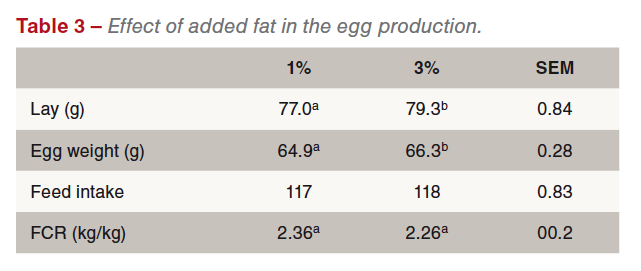 Layers prefer to eat large particles before eating the fines. When birds are in cages, this selection capacity is reduced and with a good management of the feed delivery, we can minimise this activity even if we do not have the correct feed structure. When the layers are out of cages, we cannot control this selection of particular particle size so it is important to make a feed as homogenous as possible were the bird cannot select. Making a homogenous feed is not easy; the layers feed raw materials are at the extremes with large particles such as the grains and calcium and very fine particles such as the synthetic amino acids, vitamins, minerals and trace minerals. Therefore, there is an important job to do by the feed mill and the type of the raw materials we select.
Layers prefer to eat large particles before eating the fines. When birds are in cages, this selection capacity is reduced and with a good management of the feed delivery, we can minimise this activity even if we do not have the correct feed structure. When the layers are out of cages, we cannot control this selection of particular particle size so it is important to make a feed as homogenous as possible were the bird cannot select. Making a homogenous feed is not easy; the layers feed raw materials are at the extremes with large particles such as the grains and calcium and very fine particles such as the synthetic amino acids, vitamins, minerals and trace minerals. Therefore, there is an important job to do by the feed mill and the type of the raw materials we select.
In the feed mill, it is important to have a pre-grinding facility where we can decide which raw material should or should not be ground as the first step. At the grinding equipment, a roller mill will help us to have a more uniform cut of the grains and reduce the fines during their milling. In the selection of the raw materials, there are also important decisions we can make; they might increase the feed cost but it will improve the performance of the birds as they will be eating what they need.
These decisions are about reducing the dustiness of the feed. We can add as many liquids as possible in replacement of the fine particles and we can have a minimum of oil in the diet. The oil will help to bind the fine particles, so we will reduce the fine particles (<5mm) significantly. However, despite the additional cost that might be involved, this practice can produce some additional benefits (Table 3) as was shown in the study by Safaa (et al., 2008).
Source: From the Proceedings of the 2019 Australian Poultry Science Symposium


